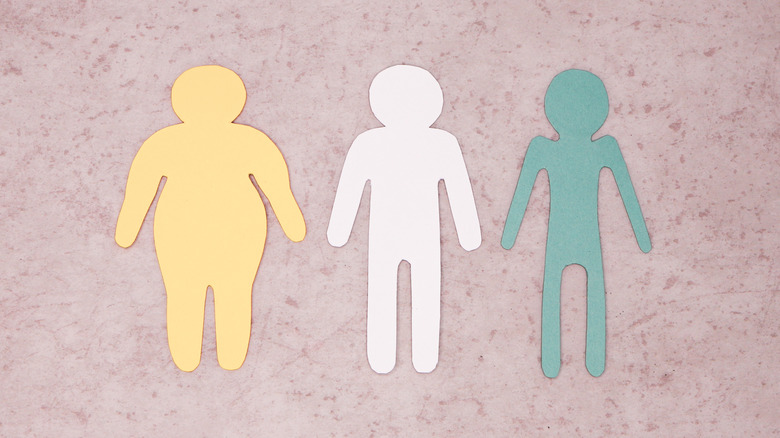What You Need To Know About Visceral Fat
You might not think about fat in terms of types, but there are five different kinds of fat. According to WebMD, our bodies can house brown, white, subcutaneous, visceral, and belly fat. Simply put, all fats have one or two jobs: storing energy or releasing metabolic hormones.
Brown fat keeps you warm, and it is more prevalent in lean people and children. The job of white fat is to store energy and release hormones. Subcutaneous fat is located directly under the skin, and it can be seen on buttocks and thighs. Visceral fat is located around the organs inside your abdominal cavity. Belly fat is a combination of visceral and subcutaneous fat.
Visceral fat is an endocrine organ, meaning that it secretes hormones and molecules that trigger other bodily functions, such as producing cholesterol by delivering fatty acids to the blood, per Harvard Health Publishing. But too much of it can be problematic.
Visceral fat is linked to several health problems
Visceral fat is considered the most dangerous kind of fat because it can promote insulin resistance, even if you have not been diagnosed with diabetes or prediabetes, per Healthline. It can also raise your blood pressure and increase your risk of developing heart disease, stroke, breast cancer, colorectal cancer, and Alzheimer's disease.
If you are concerned about how much visceral fat you may have, measuring your waistline can help you get a general idea of where you stand. Medical News Today notes that women with a waist measurement of more than 35 inches are at risk to develop problems associated with excess visceral fat. For men that number is 40 inches or more.
You can lose visceral fat by adopting a lifestyle that includes regular cardiovascular exercise and a healthy diet, and adopting lifestyle changes that help you manage stress, according to Healthline.


